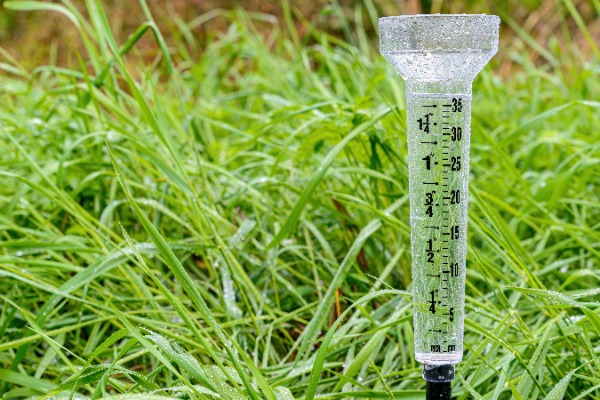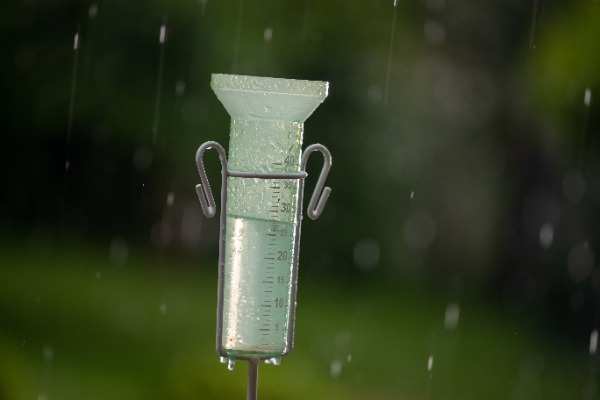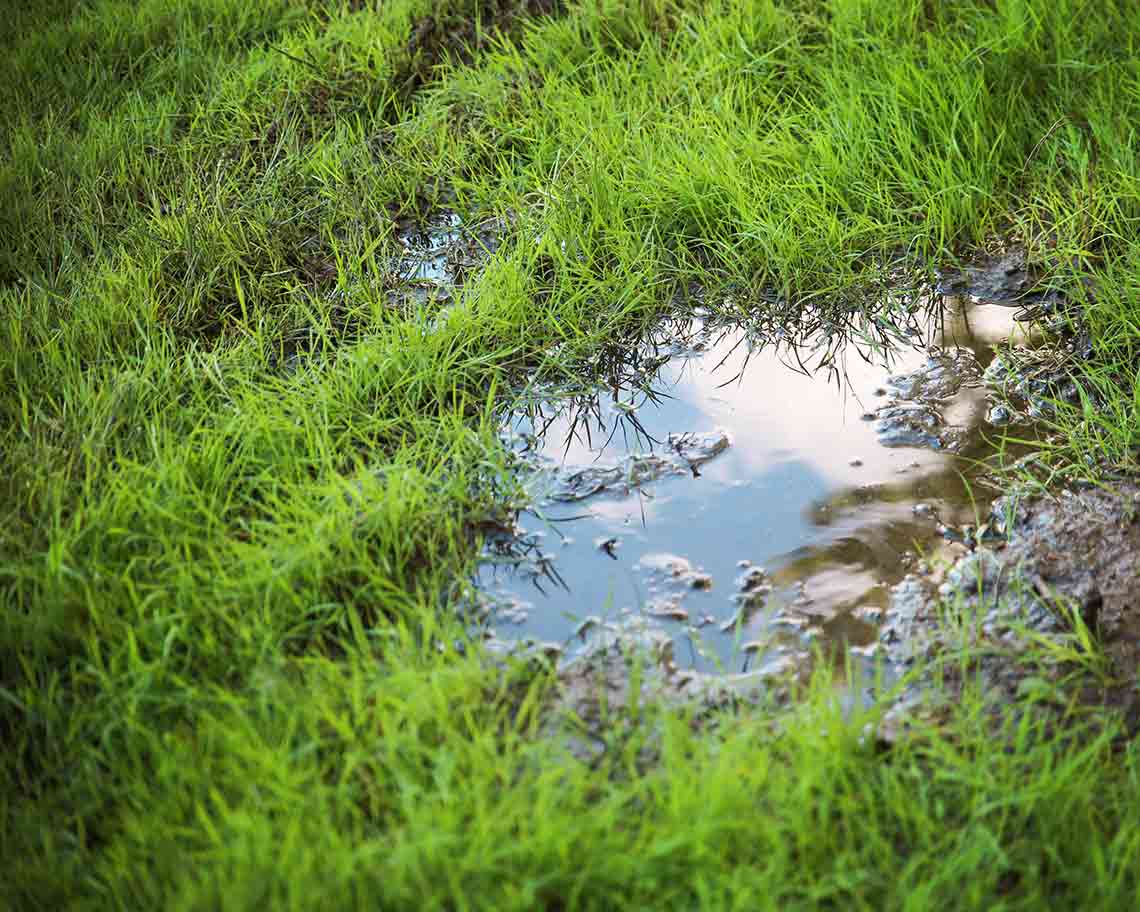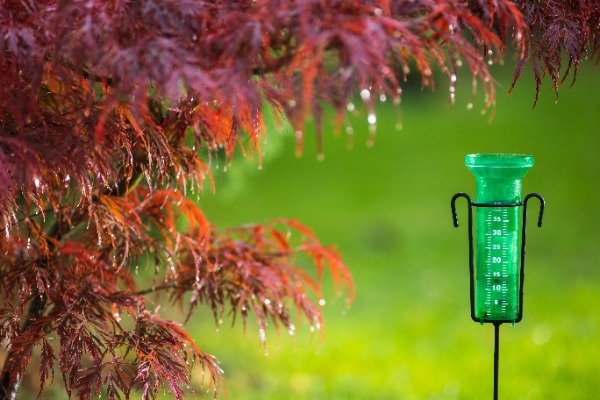Last Updated:
July 26, 2025
One often overlooked aspect of lawn care is monitoring how much water your lawn actually receives. Rainfall can significantly influence your watering schedule, and overwatering can be just as damaging as drought. That’s where a simple tool comes into play: the rain gauge.
If you’ve never used a rain gauge before or are unsure how it fits into your lawn care routine, the information below will walk you through everything you need to know!

A rain gauge is a simple scientific instrument designed to measure the amount of precipitation that falls in a specific location over a given period of time. At its core, a rain gauge is a container that collects rainwater and is marked with measurement lines to indicate how much rain has accumulated.
There are different types of rain gauges, including standard manual gauges, digital or wireless models, and even high-end tipping bucket rain gauges used by meteorologists. For home lawn care, however, a basic manual rain gauge is usually more than sufficient. These are often made of clear plastic or glass, with a funnel and a collection tube that makes it easy to read precipitation levels.
To get accurate readings from your rain gauge, placement is key. You want to place it in an open area of your yard where it can collect rain without obstruction from trees, fences, or buildings. Tall objects can block rain or cause it to splash into the gauge, skewing the results. The best placement is about 2–5 feet above ground on a post or stake, away from runoff areas like roof overhangs or patios.
Once in place, reset the gauge before or after each rainfall by emptying it completely so it’s ready to measure the next storm accurately. Here are a few setup tips:

Reading a rain gauge is straightforward. After a rain event, simply look at the markings on the side of the collection tube. The water level will indicate the amount of rain that has fallen, typically measured in inches or millimeters. Most home rain gauges have measurements in increments of 0.1 inches, making it easy to get an accurate reading.
Make a habit of checking the gauge after each significant rain event, and keep a log if you want to track rainfall trends over time. Some homeowners even pair rain gauge readings with smart irrigation systems that adjust watering schedules based on recent precipitation.
Water is essential for any healthy lawn, but how much your lawn actually needs depends on several factors: grass type, soil composition, sun exposure, and weather. Most lawns require about 1 to 1.5 inches of water per week, either from rainfall or irrigation. That means if Mother Nature provides sufficient rain, you can skip a scheduled watering. If not, you'll need to supplement it with sprinklers or hose watering.
Without a rain gauge, it’s impossible to know how much rain your lawn has received unless you’re estimating based on puddles or wet soil, which is unreliable and inaccurate. Overwatering can lead to shallow roots, fungal diseases, and wasted resources. Underwatering, on the other hand, stresses the grass, encourages weeds, and can lead to dead patches. A rain gauge removes the guesswork and helps you apply water more efficiently.

The goal is to give your lawn consistent hydration without overdoing it. Deep, infrequent watering is better than shallow, frequent watering because it encourages deeper root growth. So even if your rain gauge only shows a small amount of rain, you may still want to water deeply once or twice a week rather than a little bit each day.
The information your rain gauge provides is only helpful if you use it to inform your lawn care strategy. Here’s how to apply what you learn:
Rain gauge data is even more useful when you combine it with knowledge of your local conditions. Different seasons and soil types affect how much water your lawn actually retains and requires. In the spring and fall, your lawn usually needs less frequent watering due to cooler temperatures and higher natural rainfall.
In the summer, especially during heatwaves or drought conditions, you’ll need to be more diligent about checking the gauge and watering as needed. Clay soil holds moisture longer, so it may not require as much supplemental watering, while sandy soil drains quickly and may need more frequent attention to maintain moisture levels.

Even though rain gauges are simple tools, there are a few common errors that can affect your readings. Avoiding these missteps ensures your data is reliable and your lawn benefits from the right amount of water:
In the world of lawn care, small tools can make a big difference, and the humble rain gauge is a perfect example. It doesn’t require batteries, doesn’t cost much, and doesn’t take up much space, yet it gives you vital information that can shape your entire watering strategy.
We hope you have found this information helpful when you are carrying out your lawn care routines. For more help with lawn care in Salt Lake City, reach out to us here at Holmes Lawn & Pest today!
How To Care For Kentucky Bluegrass In Utah Lawns
Kentucky bluegrass is beloved as one of the most beautiful and comfortable turf types available. Come learn how to maintain this grass in your Utah lawn.
Learn MoreHow To Care For Perennial Ryegrass In Utah Lawns
This post explores why perennial ryegrass is perfect for Utah homeowners who want a resilient lawn that looks great!
Learn MoreHow To Care For Tall Fescue In Utah Lawns
This blog post explores what makes tall fescue one of the most popular grass types in Utah, and what steps you can take to maintain a tall fescue lawn.
Learn More